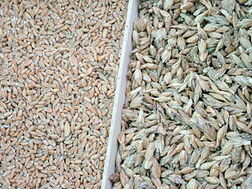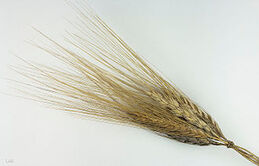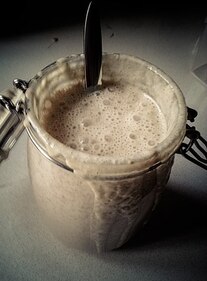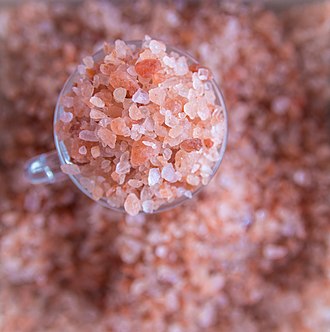Tom's Pantry
Organic Baking Ingredients
|
I keep a stock of organic flours, nuts, seeds, and many baking ingredients. You can buy these ingredients from me, in small or bulk quantities. I rely on three wholesale suppliers, so I have competitive prices. I checked the retail prices at a popular bulk food store and my ingredients prices are considerably lower.
I keep a small inventory, so please give me lots of prior notice, especially for bulk quantities, so that I may restock from my suppliers. |
Organic
Tom's Pantry uses almost only certified organic flours. Most of the other ingredients are also certified organic, with a few exceptions depending on availability. Look for the list of ingredients on the label to see which items are organic.
But Tom's Pantry is not a certified organic operation.
But Tom's Pantry is not a certified organic operation.
Our Ingredients
Wheat FlourThe many species of wheat together make up the genus Triticum; the most widely grown is common wheat (T. aestivum). Bread flour is usually derived from hard red spring wheat, whereas soft winter wheat usually goes for pastries. Wheat is commonly produced in Canada, including Ontario and around the world. Wheat has the most gluten and causes bread to rise quickly.
|
Spelt FlourSpelt (Triticum spelta) is a species of wheat cultivated since 5000 BC. Considered an ancient grain, spelt was an important staple in parts of Europe from the Bronze Age to medieval times. It carries on today as a specialty health food in Europe and North America. Spelt gives a stronger but less bitter grain taste than wheat.
|
Kamut FlourKamut, the branded name for Khorasan wheat (Triticum turanicum), is an ancient grain type. Khorasan refers to a historical region in modern-day Iran in the northeast and parts of Central Asia including modern-day Afghanistan. This grain is known for a cream colour, delicate texture, and rich, nutty flavor.
|
Rye FlourRye (Secale cereale) is a grass grown extensively as a grain, a cover crop and a forage crop. It is a member of the wheat tribe and is closely related to barley and wheat. Since the Middle Ages, people have cultivated rye widely in Central and Eastern Europe. It serves as the main bread cereal in most areas east of the French-German border and north of Hungary. Thanks to its strong taste, people appreciate the classic rye bread.
|
Sourdough CultureSourdough culture is a living dough sample kept every day and fed fresh flour for maintenance. Some culture is taken to make bread and the remaining culture is fed and multiplied for the next time. Culture is made by the fermentation of dough using naturally occurring lactobacilli bacteria and fungi. Sourdough bread has a mildly sour taste not present in most breads made with baker's yeast, and better inherent keeping qualities than other breads due to the lactic acid produced by the lactobacilli.
|
Himalayan SaltPink Himalayan salt is a pink-coloured salt extracted from the Khewra Salt Mine, which is located near the Himalayas in Pakistan. The natural harvesting process allows pink Himalayan salt to possess many other minerals and trace elements that are not found in regular table salt.
Some people estimate it may contain up to 84 different minerals and trace elements. In fact, it's these very minerals, especially iron, that give it its characteristic pink colour.. |
Paper or Plastic?
Tom's Pantry uses paper and plastic bags to package the bread.
A loose loaf without a package is great for the day of baking as the crust stays slightly crispy.
A paper bag is appropriate for the day of baking and the first day after baking, maybe even the second day. It releases some moisture from the bread and keeps the crust crispy, if that is what you want. By the third day, the bread really starts to dry out and gets tough. Beyond two days, the loaf should be kept in either a bread box or a plastic bag, perhaps in the fridge to last up to a week.
A plastic bag keeps the bread moist and softens the crust, if that is what you want. The plastic bag is necessary for storage in the fridge or in the freezer.
In all situations, a toaster does wonders to bring out the texture and the flavour of the bread while hardening the crust.
A loose loaf without a package is great for the day of baking as the crust stays slightly crispy.
A paper bag is appropriate for the day of baking and the first day after baking, maybe even the second day. It releases some moisture from the bread and keeps the crust crispy, if that is what you want. By the third day, the bread really starts to dry out and gets tough. Beyond two days, the loaf should be kept in either a bread box or a plastic bag, perhaps in the fridge to last up to a week.
A plastic bag keeps the bread moist and softens the crust, if that is what you want. The plastic bag is necessary for storage in the fridge or in the freezer.
In all situations, a toaster does wonders to bring out the texture and the flavour of the bread while hardening the crust.








